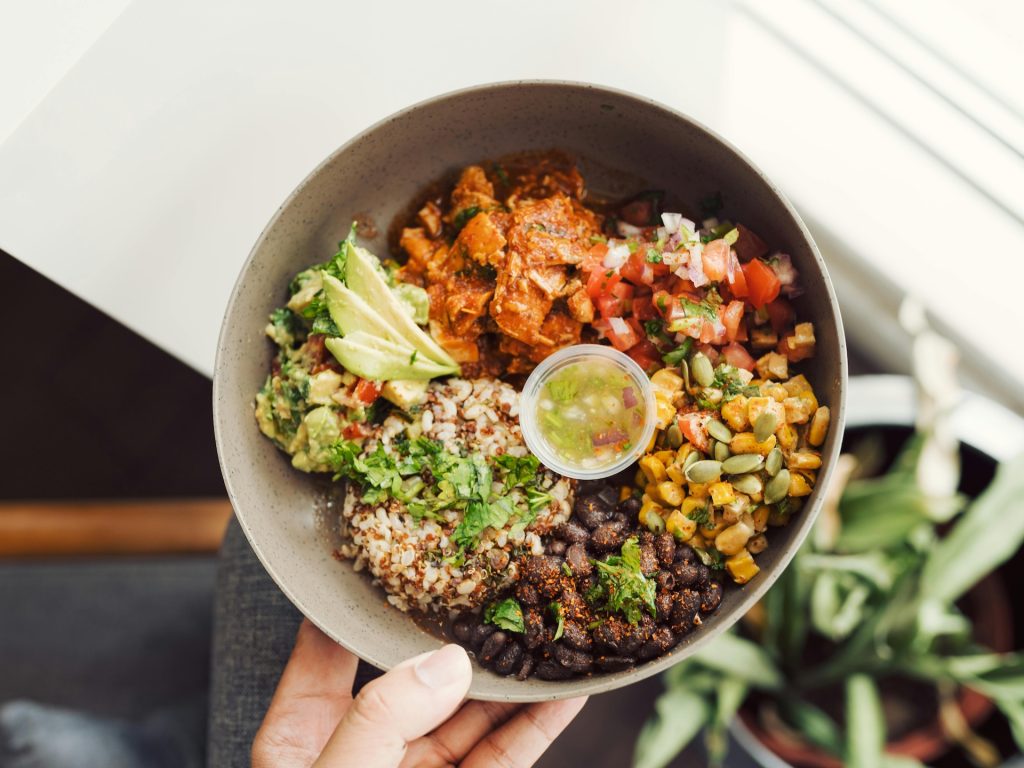
In the last decade, Quinoa has gone from being a novelty of the kitchen to becoming a usual food in our despair. We analyze this versatile food that many already include in the famous list of superfoods (although we have already said many times that no food has super powers).
What is quinoa?
Quinoa (Chenopodium quinoa Willd.), Also called Inca Wheat, Rice or Rice of Peru, it is a pseudocreudo whose origins date back to 5000 years ago in countries and nos. The main one is cultivated, in Chile, Peru Bolivia, Colombia, Ecuador and Argentina, although, given the high demand of this product, there are also crops in Europe, Asia and Africa. “For its compositionic and the components of the subjected, such as phytosterols, phenolic computations or bioactive computations, among others, organisms such important Martín Almena, dietitian-nutritionist and member of the Spanish Academy of Nutrition and Dietetics.
Traditional origin and use in Yinas cultures
Despite a being a newcomer to Western cuisine, the villages and have them millennia of relationship with this-pseudocreal. Due to its high nutritional value it is a basic ingredient of its diet, it has been easy to enumm it in soups, salads or garrisons, as well as diverse preparation with beans, potatoes or corn. As in European villages with cereals, the ease of conservation of quinoa makes it a food Vital during times of scarcity of food.
The pre -Columbian community attributed symbolic properties as if it were a gift from the gods. For this reason, it was used in religious and agricultural ceremonies, such as Inti Raymi (Fiesta del Sol), where it was common to offer it to the gods as an offering.
Quinoa types
As we find in other agricultural products, there are also various varieties of Quinoa. «Among the different varieties there may be important differences in the nutritional composition, that is, in the protein or carbohydrate content. The cultivation conditions or the prosecutions it receives before reaching the consumer can also modify that nutritional composition,» says Martín Almena, which real of exercising as a professor at the University of Alcalá in the Nutrition and Bromatology Érea.
Although all quinoa varieties of the benefits of similar nutritional benefits (high protein content, fiber, vitamins and minerals), varieties of dark colors, such as red and black quinoa, timúr to have a higher antioxides content to metal wander The sescones, the sesages, the sescados of the siles, the sesages, the sesages of anthocyans (those purple pigments that are also presented in other foods, such as the blueberries and the blackberries). In any case, the choice of one or another will depend mainly on personal taste and the type of dish you want to prepare.
Characteristics of the different varieties of Quinoa
- White quinoa (or golden).It is the most common and easy to find in Spain. The grains are white, golden or pale yellow and has a soft flavor, very easy to inflate in diverse dishes.
- Red quinoa. It is characterized by its dark or brown reddish tone and by having smaller and earthy flavor.
- Black quinoa. Black and intense flavor that remembers the nut. They have a more crispy texture.
Nutritional value of quinoa
Proteins
High protein content (13,8-16.5 % in dry matters), with very balanced profile of amino acids. «Unlike cereals, quinoa amounts contains important of lysine, as well as metionine, which is the limiting amino acid in the case of legumes, thus the reindeer of essential amino acids.
It is suitable for gluten -free diets.
Carbohydrates
The main carbohydrate in the quinoa is the starch, variables of but among the quinoa tuits (between 32 and 69.7 %).
Fiber
Fiber content is also important (around 8%), both soluble and insoluble.
Omega-3 fatty acids
Although the fat that contributes barely represents 6%, more than 50% of those containing are of the unsaturated type and with the contribution of the essential polyunsaturated fatty acids linoleic (omega 6) and alfalinolenic (omega 3) (omega 3)FAO data).
Vitamins and minerals
Compared to cereals, quinoa «is a source of magnesium, potassium, phosphorus, magnesium, zinc, selenium, iron, and to a lesser extent, vitamins of group B, among the vitamins of group B» stand out.
How many calorie does it provide?
According to the Varity, its energy value is between 300 and 399 kilocalories per 100 grams of food.
Quinoa benefits in the diet
In addition to its organolept properties that teach other grains, it has components that confer properties derived from its nutrient contribution. For example, due to its selenium contribution it contributes to the protection against oxidative damage, it is cardiosaludable for its contribution of potassium that contributes to the normal arterial pressure, or is Buya for mental health, for its contribution of iron that contributes to the function of psychol function …
«In general terms, there is talk that quinaa has shown benicios at the metabolic level, as well as for diverse pathologies, such as cardiovascular diabetes of the sick, without embarked, necessary more estimated child of the higher quality established established established established.
Quinoa in weight loss diets
Martín Almena emphasizes that “Quinoa is a food with a contribution of nutrients and bioactive compounds for health, and that I could be part of a pattern of foodizable and the management of different health situations, for example, obesity, obesity, the fujia of the handles of health situations, for example, obesity, the omemia of lastas of health situations, for example, obesity, obesity, obesity, omity Lasts of health situations, for example, obesity, the ememia of different from health situations, for example, obesity, ememia of lectures.
How to cook and consume quinoa to appare
The preparation of quinoa in the kitchen passes through two phases:
1. Washing. Before cooking, it should be washed to reduce or eliminate the saponin layer that covers quinoa grains. «To do this, we will put it in a strainer under the water tap and wipe out stirring conscing until the water comes out clear. Once rinsed, it drains well to remove the water excess,» explain.
2. Cooking. Hay that cook it in water, the recommended proportion of the quinoa water volume (for each cup of quinoa, two cups of water). «After reaching the boiling, we will lower the heat to a minimum and let it cook covered until the quinoa absorbs all the water, which is about 15 minutes,» add. Some spices or a little salt can be included, «although it is recommended, it does not abuse this last one.»

Myths and doubts about Quinoa
What is better, take rice or quinoa?
Some works launch the ploting that quinoa is food “however, we should not stop lying that a salary diet must be varied. Both foods can be part of the feeding of people are used within food of the food of the straight foods. The expert.
Can it be taken in the Emarazo?
«Yes, in fact, it is a food that in many ocher can come well during the Emarazo since fiber contained can help the management of the handling of the tissue tissues during the Emarazo,» he adds.
Does it cause swelling?
If it is prepared properly, I do not pay a problem at the digestive level, or swelling of any kind. «On some occasions, when gastrointestinal discomforts have been experienced, they have been associated with the presence of saponins, so, if the grains are rinsed well, without problems there should be,» he concludes.
Is quinoa a superfood?
Roundation, no. As we have already mentioned in antecases, no food, however wageable it has miraculous, curatua or withdrawal results overnight. What it is has beneficial effects will be a long -term healthy lifestyle taking care of these pillars pillars: diet, physical activation, rest and stress control.
The Aldi Council
Fresh or minimal foods processed that provide vegetable proteins are an option that will combine those that will combine throughout the week with protein sources of animal origin, or, simply, with others of plant origin that are complemented.
Francisco Javier Martín Almena. Diploma in Human and Dietary Nutrition and License in Food Science and Technology from the Autonomous University of Madrid. He expanded his training with the Master in Physical Anthropology: Human Evolution and Biodiversity, taught by the Autonomous University of Madrid, Complutense University and University of Alcalá de Autares, in which the qualification was obtained entitled «Food habits and lifestyles during the Emarazo of Spanish and Latin American women residents in the Community of Madrid: Influence on the health of the newborn.» It also completes the training of training by studying the master’s degree in clinical trials, taught by the University of Seville. He obtained the title of Doctor in Physical Anthropology from the Autonomous University of Madrid Universidad Complutense and University of Alcalá de Henares after the defense of doctoral suesis entitled “Valuation of the Nuado State of Spanish Paralympic Athletes”, with the maximum slope of outstanding cum laude. He has also studied courses of nutrition, quality and food security and related to the teaching of the consc that is completed and updated. Parallel, has exercised its professional activity as dietitian-nutritionist since 2008 in communities, in private consultation and collaborating with training companies. Actually, it is part of the teaching body of the Degree in Human and Dietetics Nutrition in the Faculty of Health Sciences of the University Isabel I teaching practical teaching of cineanthropometer in the subjects of nutrition and dependent dietem and dietary and diet, dietary and dietary and dietary, assignment, assignment, assignment, assignment, diet allocation. Tutoring end of the end of sports nutrition.







